Build nutritious meals for PCOS #71
A guide to building nutritious dense meals for PCOS
Hello everyone,
How was your week? We are in full spring mode, and I love the long days.
I am a Nutritional Therapist, and nutrition is the core of my training and daily work. My philosophy is to always focus on nutrient-dense meals, which can offer you all the amazing micro and macronutrients your body needs to thrive. These also help you manage your symptoms and bring your hormones back in harmony.
But I recognise this is not always easy. What you are meant to eat to be healthy is an endless debate that sometimes I roll my eyes at. How have we made eating so complicated? No research has been done on the perfect plate for PCOS. My recommendations are based on a slightly lower carbohydrate, high fibre, and high vegetable diet. This fits with the evidence found on what diets are best for PCOS.
The 5 components of a nutrient-dense meal are:
Protein - Vegetables/Fruit - Wholegrains - Fats - Fibre
Each component serves a distinct purpose, contributing to our overall health and well-being and helping us manage our symptoms.
Using your hands can be a practical and easy way to estimate portion sizes. I’ve included two measurements to use as a guideline to help you balance your meals.
Protein
Portion:
Aim for at least 20g of protein per meal (approx 50-60g/day)
The palm of your hand is the equivalent of the protein portion of your meal
Benefit:
Protein is digested slowly, which helps you feel full for longer. Introducing protein can help curb cravings and reduce the likelihood of overeating later in the day. Amino acids from protein digestion are vital nutrients for building hormones, neurotransmitters, and tissues.
Pairing protein with carbohydrates can also help slow down the release of sugar, preventing blood sugar spikes and crashes that leave you tired and cause cravings that lead to overeating. Stable blood sugar levels also reduce the need for insulin, easing symptoms of insulin resistance.
Whole-grains
Portion:
Approximately 30g per meal
A closed fistful
Benefit:
Whole grains include all parts of the grain, which means they are high in fibre. Fibre is one of the TOP IMPORTANT nutrients for PCOS, and we discuss it below.
They also include vitamins, minerals, antioxidants, essential fats and proteins, which are key for our health.
Thanks to their fibre content, they release energy slowly, providing a steady fuel source throughout the day. This helps regulate blood sugar levels and improve insulin sensitivity. Compared to simple carbohydrates like white rice and white pasta, this sustained energy release can prevent energy crashes and fatigue, which can help reduce cravings and improve energy levels. The Eat Well guide recommends
Vegetables
Portion: half your plate - At least 1 to 2 cups of vegetables per meal.
Two cupped hands are the equivalent of the vegetable portion of your meal
Benefit:
Vegetables are high in fibre, help regulate blood sugar levels and improve insulin sensitivity. They’re high in nutrients but also low in calories, which can help reduce your calorie intake if you’re trying to lose weight.
Note: Please be mindful of potatoes and sweet potatoes. While nutritious, they are starchy vegetables with a higher carbohydrate content. If you opt for them, perhaps skip the whole-grain portions on your plate.
Different-coloured vegetables contain various vitamins and minerals, providing diverse nutrients essential for our overall health and well-being. I recommend making it a habit to try a new vegetable every week. This way, you get the chance to benefit from various vegetables every week/
Many vegetables are rich in antioxidants, which help reduce inflammation and oxidative stress in the body, contributing to improved overall health and symptom management.
Tinned and frozen vegetables are acceptable options as they often retain their nutrients when packed and frozen. This can be a convenient choice to include in your meals and help reduce food waste.
Fruits
Fruits are a great addition to a nutrient-dense meal that offers vitamins, minerals, and antioxidants essential for overall health. To maintain balance, it's important to be mindful of portion sizes. The suggested portion size for fruits is around 80g, roughly equivalent to a small piece of fruit or a half-cup of sliced fruit. I recommend keeping to 1—max. 2 portions of fruit per day and focusing mainly on vegetables.
When consuming fruits, consider pairing them with protein-rich foods to help slow down the release of sugar into the bloodstream and keep you fuller for longer. This can either be part of a meal or as part of a snack. This balanced approach ensures steady energy levels throughout the day while maximising the nutritional benefits of fruits.
Fats
Portion:
10g/meal or 1-2 Tablespoons (30g per day)
The size of your thumb will count as the fat serving of your meal
Benefits:
Fats in processed foods offer little to no benefit and should be minimised; however, some fats have some health benefits, particularly those rich in omega-3. These have been associated with reduced inflammation, hormone balance, improved insulin sensitivity, and regulation of menstrual cycles.
Additionally, fats can help us feel fuller for longer and stabilise blood sugar levels, which can reduce cravings and, thus, overeating.
Fibre
Fibre is present throughout the above nutrient categories, including vegetables, wholegrains, and fruits. It is an extremely important nutrient for women with PCOS (see why here).
The recommended guideline is 25–32g of fibre per day, so aim for about 10g of fibre per meal. However, populations that consume 50-100g of fibre per day have been shown to have a lower incidence of chronic disease.
Putting it all together
Some examples:
Chicken Souvlaki: Chicken (protein) + Wholemeal Pitta (wholegrains) + Onions, Cucumbers, Tomatoes (vegetables) + Olives (fats)
Recipe: https://www.themediterraneandish.com/greek-chicken-souvlaki-recipe-tzatziki/
Salmon Protein Bowl: Salmon + Edamame (protein) + Quinoa (wholegrain) + Radish, Arugula (rocket), Sauerkraut (vegetables) + Avocado Oil (can uses olive instead)/Salmon (fats)
Recipe: https://thefeedfeed.com/provisionsbypaige/easy-salmon-bowl-with-quinoa-edamame-and-radishes
Tofu stir fry Tofu + Edamame (protein) Salmon + Noodles (wholegrain) + Broccoli (vegetables) + Vegetable Oi (use olive instead of vegetable oil)/Sesame seeds (fats)
Recipe: https://www.deliciousmagazine.co.uk/recipes/tofu-and-edamame-noodles/
Creating balanced, nutrient-dense meals is foundational in managing PCOS symptoms and improving overall health. By incorporating the five essential components—protein, whole grains, vegetables/fruit, fats and fibre—you can ensure your meals provide the necessary nutrients to support hormonal balance, reduce inflammation, and stabilise blood sugar levels, which will help with mood and energy levels.
Individual dietary needs can vary, so it's important to tailor these principles to your preferences, cultural background, and specific nutritional requirements. Planning meals and snacks ahead of time, understanding portion sizes, and making mindful choices can help you stay on track and reduce reliance on processed foods.
See you next Sunday!
Francesca
1 Sources
Di Lorenzo, M., Cacciapuoti, N., Lonardo, MS., Nasti, G., Gautiero, C., Belfiore, A., Guida, B. and Chiurazzi, M. (2023). Pathophysiology and Nutritional Approaches in Polycystic Ovary Syndrome (PCOS): A Comprehensive Review. Curr Nutr Rep, 12(3).
Marsh, K.A., Steinbeck, K.S., Atkinson, F.S., Petocz, P. and Brand-Miller, J,C. (2010). Effect of a low glycemic index compared with a conventional healthy diet on polycystic ovary syndrome. Am J Clin Nutr, 92(1):83–92.
Paddon-jones, D., Westman, E., Mattes, R.D., Wolfe, R.R. and Astrup, A. (2008). Protein, weight management, and satiety 1– 4. Am J Clin Nutr, 87(suppl)1558S–61S.
Sørensen, L.B., Søe, M., Halkier, K.H., Stigsby, B. and Astrup, A. (2012). Effects of increased dietary protein-to-carbohydrate ratios in women with polycystic ovary syndrome. Am J Clin Nutr, 95(1):39–48.
Yang, K., Zeng, L., Bao, T. and Ge, J. (2018) Effectiveness of Omega-3 fatty acid for polycystic ovary syndrome: A systematic review and meta-analysis. Reprod Biol Endocrinol, 16(1):1–13.


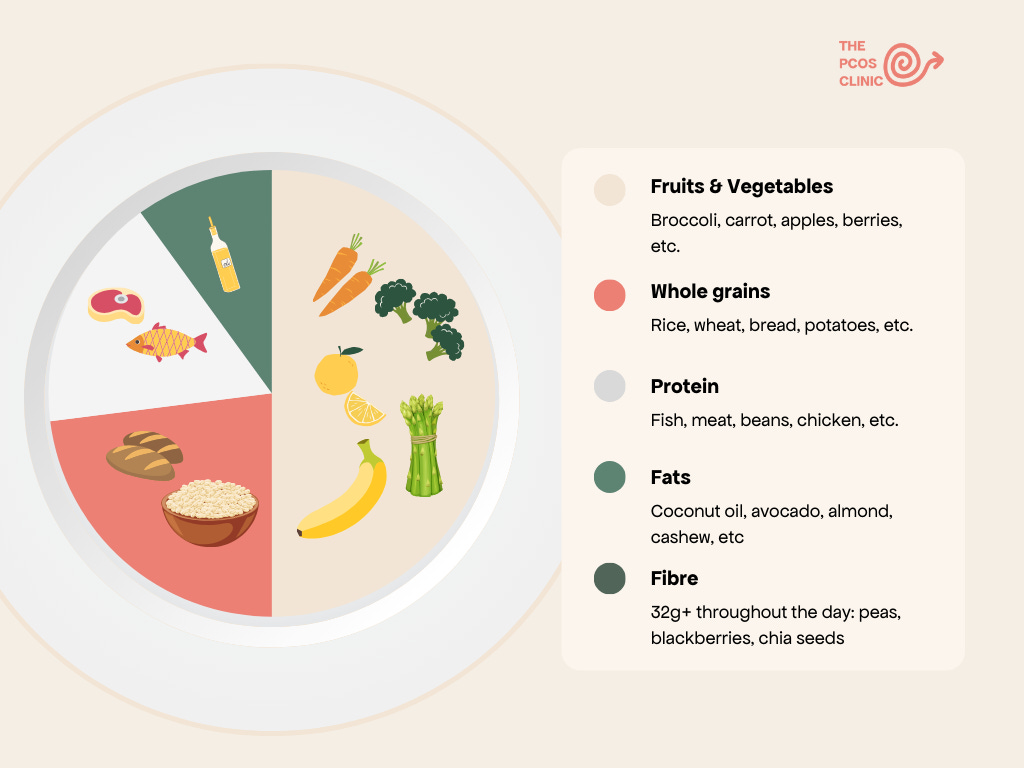
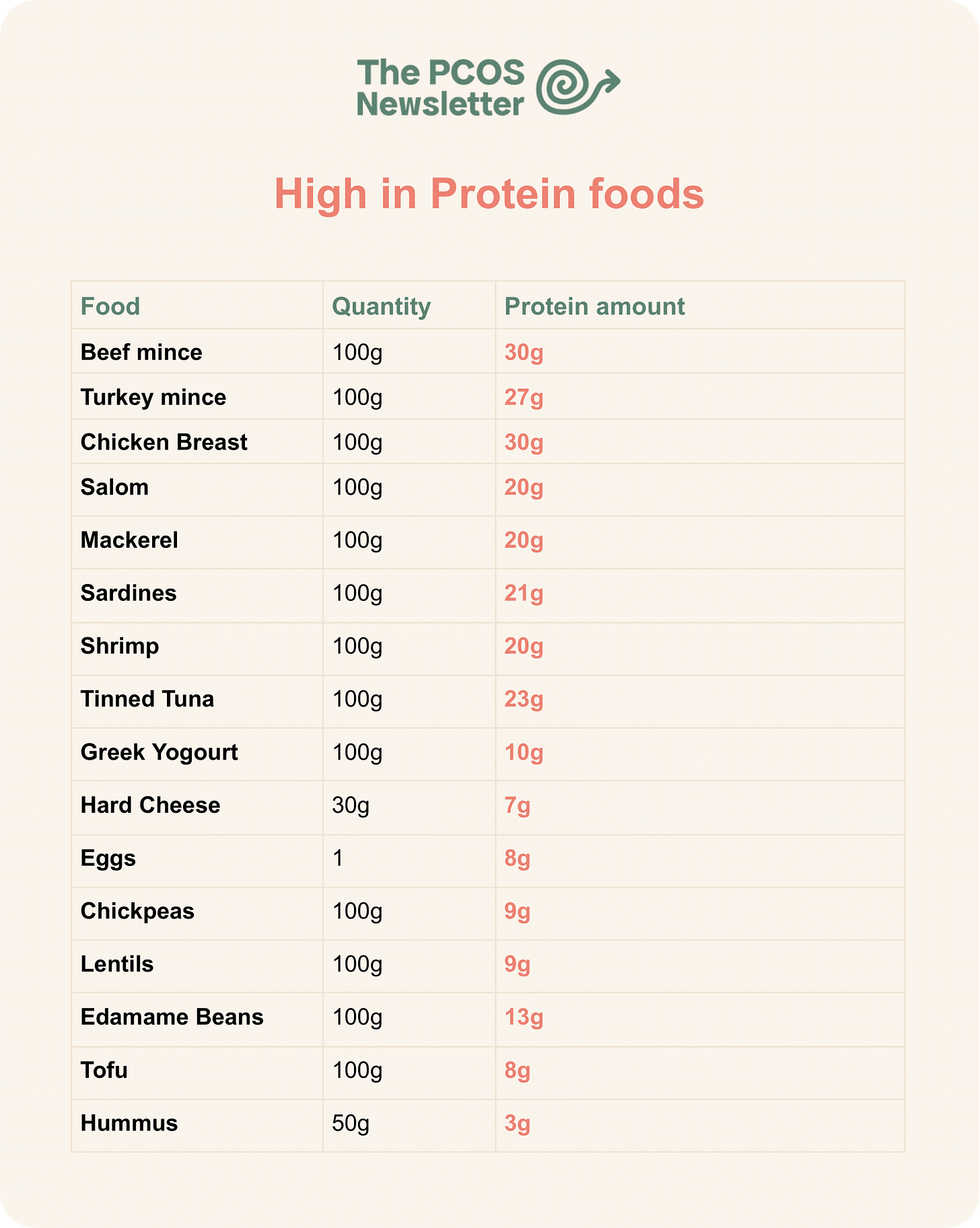
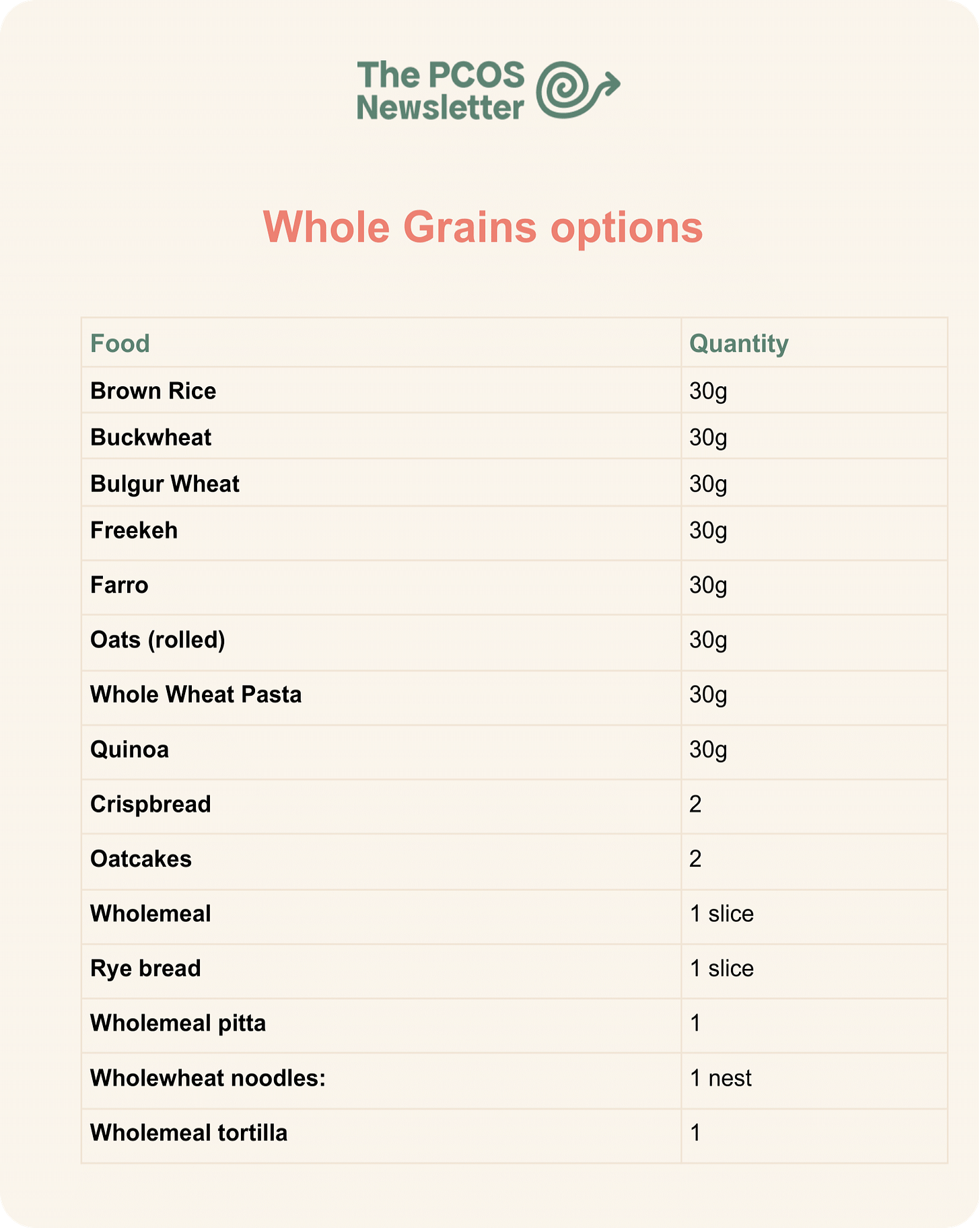
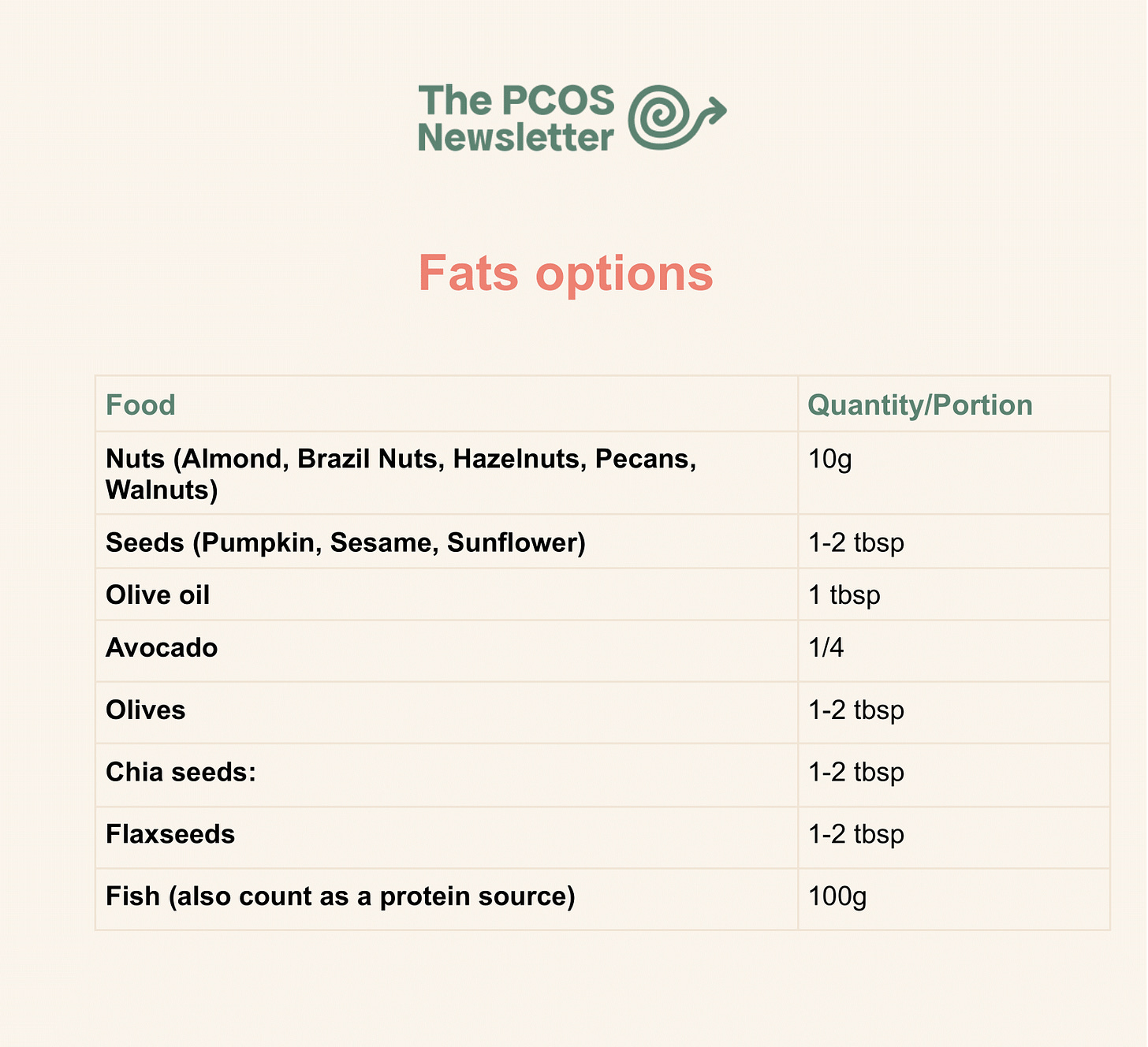
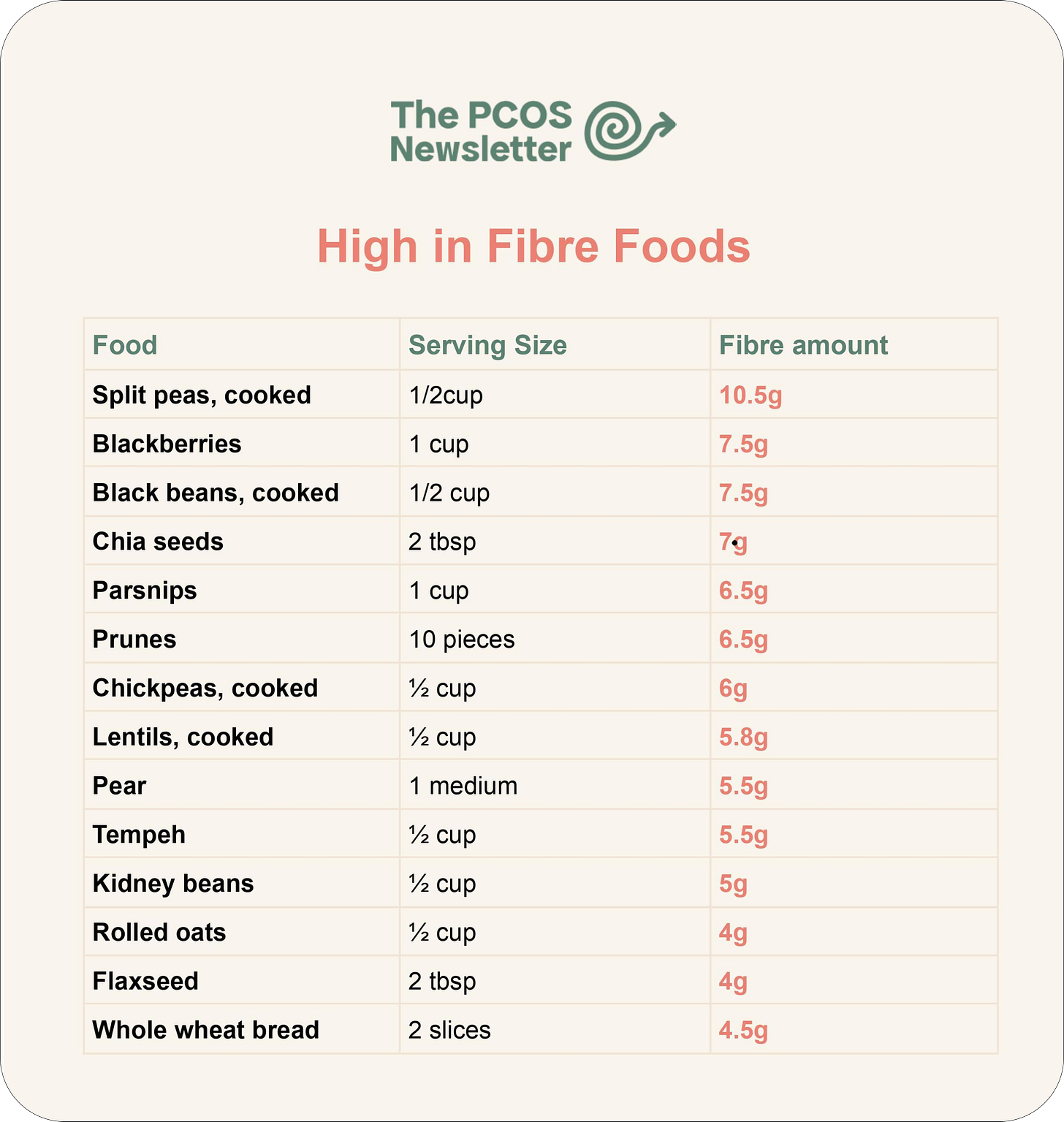
So helpful as nutrition can often get confusing especially when there are so many different opinions